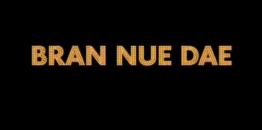 4980313946886636978.jpg
4980313946886636978.jpg
 4980313946886636978.jpg
4980313946886636978.jpg
Based on the stage musical of the same name by Jimmy Chi and the band Kuckles, Bran Nue Dae is set in 1969 and follows Willie, a young man who struggles to find a balance between the three things that drive his life: his love for his girl Rosie, his respect for his mother, and his religious faith. Willie's uncomplicated life of fishing and hanging out with his mates and his girl in the idyllic world of Broome is turned upside down when his mother returns him to the religious mission for further schooling and entry into the priesthood. After being punished for an act of youthful rebellion, he runs away from the mission on a journey that leads him to meet his 'Uncle Tadpole' and eventually return to Broome. Along the way, Willie and Uncle Tadpole meet a couple of hippies, spend the night in gaol, and meet a gun-toting roadhouse operator, while managing to stay one step ahead of Father Benedictus, who wants to bring Willie back to the mission.
Not all of the original songs from the 1990 stage musical appear in the film adaptation. For a complete listing of the original songs, see Bran Nue Dae: A Musical Journey published by Currency Press and Magabala Books (1991).
'According to the NSW K–10 English Syllabus, all students should engage with ‘texts that give insight into Aboriginal experiences in Australia’. Along with the inclusion of the Aboriginal and Torres Strait Islander Cross Curriculum Priority, this suggests that texts in English should develop deep understanding of Aboriginal cultures, experiences and perspectives. This project uses critical discourse analysis followed by content analysis, adapted from Lowe and Yunkaporta’s (2013) Cultural Analysis Matrix, to analyse representations of Aboriginal experiences and perspectives in six commonly used classroom texts to ascertain the nature and depth of the Aboriginal voices, experiences and perspectives within each text. This paper argues that texts which include Aboriginal characters and experiences through non-Aboriginal perspectives remain at risk of tokenism and/or shallow inclusion. However, texts which embody and value Aboriginal ways of knowing, doing and being demonstrate a capacity for more nuanced and genuine insights into Aboriginal experiences in Australia.'
Source: Publisher's blurb.